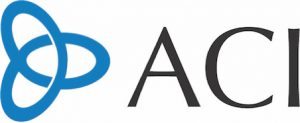Paycheck Protection Program: What Small Broker-Dealers Need to Know Now
The window is now open for businesses to apply for SBA-backed Paycheck Protection Program loans under the $2.2 trillion CARES Act that President Trump signed to help the country weather the coronavirus pandemic.
ACI understands many of our small broker-dealer clients are planning on using the program’s loans to cover payroll and operating costs during this crisis. Since net capital compliance is one of the most important functions ACI provides, we want to share relevant sections of FINRA’s guidance regarding the net capital treatment of covered loans.
The guidance may answer questions you have regarding a CARES Act loan and help guide you in your decision on whether or not to apply. While the provisions of the CARES Act are still being assessed industrywide, ACI stands ready to help you with the process.
Paycheck Protection Program Loans Explained
The CARES Act’s Paycheck Protection Program (PPP) allows qualified businesses with fewer than 500 workers to apply for a Small Business Loan to cover payroll costs. The loan is limited to the lesser of $10 million or the company’s average total monthly “payroll costs” for the 1-year period ending on the date the loan is made, multiplied by 2.5, plus any refinanced loan under the Economic Injury Disaster Loans (EIDL) program obtained after June 30, 2020.
Proceeds from a PPP loan may be used for payroll costs (as defined), employee benefits and commissions, interest payments on mortgages, rent, utilities, and interest on debt incurred before February 15.
A business can apply for loan forgiveness in an amount equal to the cumulative amount of payroll costs, rent, utilities, and interest paid on mortgages during the eight weeks after the loan is made. The amount forgiven is limited to the extent compensation and headcount are reduced relative to a base period, and any amount forgiven will not be taxable to the borrower.
The good news is that U.S. Treasury Secretary Steve Mnuchin last week said that the federal government has the full intention of committing more funding if PPP loan requests total more than the $350 billion already pledged. He said the program has “huge” bipartisan support.
FINRA Guidance on the Net Capital Treatment of Covered Loans
FINRA has provided guidance on the PPP loans, confirming that the loan balances will be considered non-aggregate indebtedness. This ensures that broker dealers who receive PPP loans cannot be placed in a worse net capital position as a result of an approved loan application. Qualifying expenses related to the loans may be added back to net capital, to the extent they qualify for forgiveness under the SBA program.
More specifically, a firm that has included a covered loan as a liability on its balance sheet may add the amount of qualifying expenses back to net capital to the extent it has incurred expenses that would be eligible for forgiveness. The add-back to net capital may not exceed the amount of the balance sheet liability for the covered loan that the firm reasonably expects to be forgiven under the CARES act. Since the add-back cannot be greater than the balance sheet liability for the covered loan, the add-back cannot increase net capital by more than the balance sheet liability for the covered loan.
FINRA also stated a firm that has included a covered loan as a liability on its balance sheet may exclude the covered loan from aggregate indebtedness during the 8-week “covered period” after the origination of such covered loan. After the end of the covered period, such firm may exclude from aggregate indebtedness the amount of its liability for such covered loan that the firm is permitted to add back to net capital, as described above.
For more details on FINRA’s guidance and what needs to be included in a FOCUS report, click here.
Net Capital Treatment of Deferred Annual Assessment from FINRA
FINRA has stated that firms with fewer than 150 registered persons can treat the annual assessment invoices that are distributed this month as billed as of August 1, rather than as due upon receipt. Also, small firms can choose to pay 50% of the amount due on September 1, 2020 and the remaining 50% on December 1, 2020.
Small firms should, consistent with obligations under Generally Accepted Accounting Principles (GAAP), determine whether they should accrue a liability for the 2020 annual assessment. To the extent a liability is accrued for the unpaid annual assessment, small firms will be permitted, until September 1, 2020, to add back the amount of such liability to their net worth for purposes of computing net capital and, to the extent applicable, to exclude the liability from their aggregate indebtedness in computing their minimum net capital requirement.
For more details on FINRA’s guidance and what needs to be included in a FOCUS report, click here.
ACI will continue to provide updates on our Resources page as we manage together through this challenging time. We hope everyone is taking proactive and precautionary measures to remain safe.




